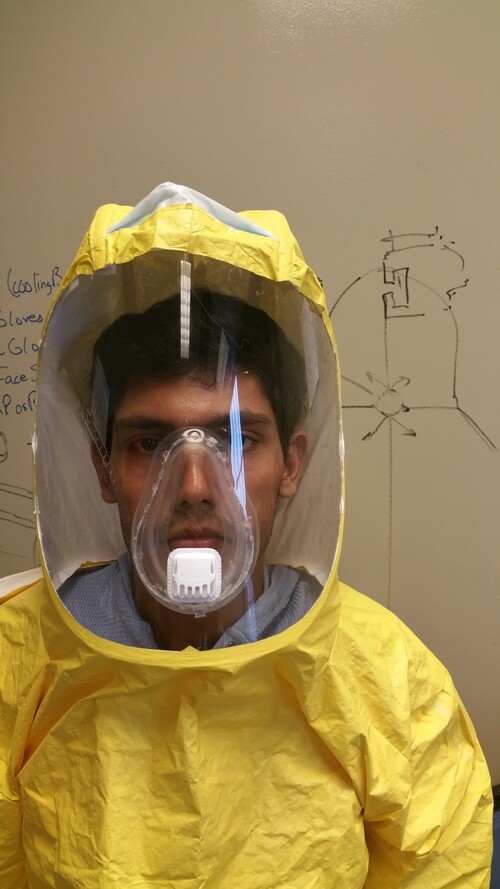For doctors, nurses, soldiers, and other responders fighting the Ebola outbreak in West Africa, currently available protective suits are both too hot to wear in the tropics and often a source of contagion when they're being taken off. To make moving and treating patients safer, Johns Hopkins University, along with international health affiliate Jhpiego and other partners, is developing a new anti-contamination suit for health care workers that is both cooler to wear and easier to remove.
With the World Health Organization confirming over 7,000 deaths and over 19,000 cases in Guinea, Sierra Leone,and Liberia alone, the outbreak of Ebola in West Africa is one of today's major health concerns. Plastic suits designed to protect health workers against the disease have to be proof against bodily fluids, but they also end up being insufferably hot and damp inside, which means that workers can only wear them for a couple of hours at a time. Worse, removing the suits without special decontamination suites runs the risk of coming into contact with the very fluids the suit was meant to protect against.
Developed in only two months after what Johns Hopkins describes as a weekend-long design brainstorming event in October, the new prototype anti-contamination suit was created by a team of engineers, medical experts, students, and volunteers, as well as non-profit Jhpiego and other partners. The brief was to make a suit that was simple in design, cheap to produce, effective against Ebola contamination, able to keep the wearer cool, and easy to remove with minimum contact between the wearer and the suit.

The bright yellow suit features a large, clear visor that's integrated into the built-in hood. But the color is about more than aesthetics. It's a major safety feature because the inside of the suit is a distinctly different color to tell the wearer what bits are safe to touch when taking it off.
For sealing the suit, there's a rear zip with baffles for further protection and break-away pull tabs for opening it. The sleeves include fingerless glove liners to make removing the outer gloves easier, and there are tabs on the wrists. The idea is that pulling the suit off is like a snake shedding its skin. The back pops open, the wearer bends over and steps on the tabs, then stands up as the suit sloughs away.
The suit uses technology originally designed by Johns Hopkins to keep cancer patients comfortable. There are battery-powered air vents in the hood that cools and dehumidifies the incoming air, and the hood has a face mask that directs warm, moist air out as the wearer exhales, so the interior remains dry. To keep the new suit in line with those now in use, each one is targeted to cost about US$30.

The Johns Hopkins suit is one of five designs out of 1,500 entries to win funding from the US Agency for International Development (USAID) as part of its Fighting Ebola: A Grand Challenge for Development competition, the results of which were announced on December 12. Johns Hopkins says that the exact amount of the award has yet to be determined, but the team will use it to continue development. The team hopes to have an improved version of the suit ready for mass production by April.
"The funding from USAID will support moving our concepts into fully functional prototypes," says Youseph Yazdi, executive director of Johns Hopkins University’s Center for Bioengineering Innovation and Design. "This will allow the team to do more detailed evaluations of our concepts, and quickly move to evaluations in the field. By the end of the funded timeline, we will have a product design that is ready to be taken up by a major manufacturer, or several, for large-scale production and distribution. Our goal is to follow the fastest path to get these concepts into the field and having an impact."
The video below outlines the features of the Johns Hopkins suit.
Source: Johns Hopkins University








